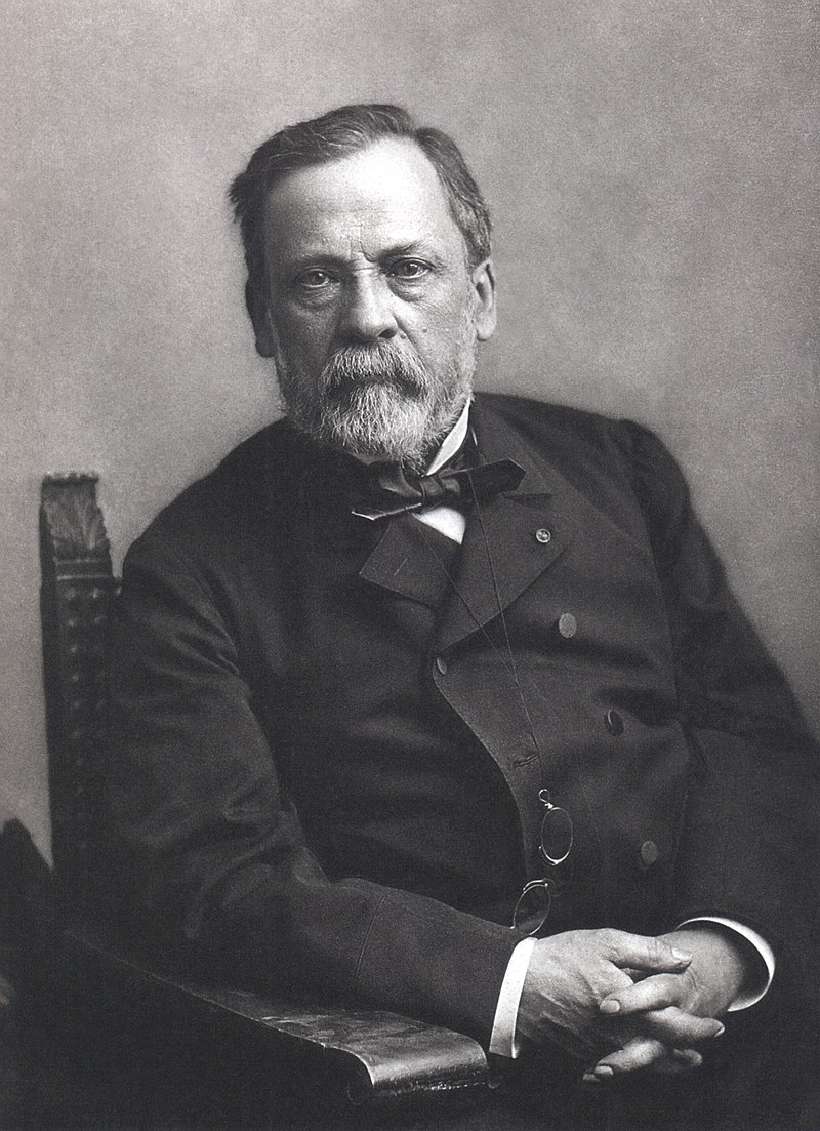Louis Pasteur: The man who discovered vaccination
Home / Non Fiction for Kids / Biographies for Kids / Louis Pasteur: The man who discovered vaccination
Louis Pasteur (1822 - 1895):
The next time you chomp on cheese or sip some wine, remember the French scientist Louis Pasteur who discovered that spoiled milk, fermented beer and wine, and many diseases are caused by bacteria. Millions of people are saved from bites from rabid dogs because of the rabies vaccine developed by Louis Pasteur.
Bacteria are tiny, living organisms that are only visible under a microscope. More than 150 years ago, Pasteur discovered that heating milk between 60 to 100 degrees Celsius kills the bacteria. This makes the milk safe to drink. This process was named “pasteurization” in his honor. Pasteur also showed that every food that is fermented, such as wine and beer, has one particular, safe, bacteria that cause the fermentation. He also found out that many diseases happen because of bacteria. This became known as the Germ Theory of Disease, or the theory that the cause of most diseases is invisible-to-the-eye micro-organisms, which are also called pathogens.
Louis Pasteur is known as the father of microbiology. He is known for developing pasteurization and vaccines for killer diseases such as rabies and anthrax. In his lifetime, he not only proved that germs are the cause of diseases, but also discovered the process of vaccination, which has saved billions of lives.
Pasteur is also known as the father of immunology, or the study of the immune system which helps fight diseases in the body. At a time when scientists did not even know the difference between a bacteria, a virus, and a fungi, Pasteur was already creating vaccines and cures against these.

Pasteur came from a poor French family. As a child, he loved to paint, sketch and fish. He studied philosophy in college. And, surprisingly, only studied chemistry and biology after graduation.
Pasteur’s success inspired him to continue working with bacteria. He moved on to work with chickens who were suffering from cholera. During his experiments, he accidentally infected his chickens. Pasteur’s chickens became mildly sick but did not die. This was strange as every chicken that came near this virus earlier had died. He realized soon that his strain of cholera had become weak. By the time he got a fresh batch of the virus and tried again, the chickens he had injected earlier did not get infected. By being injected by a weak strain of the cholera virus, his chickens developed a resistance against it. This is how he learned about vaccination.
We now know that a vaccine injection introduces a weakened strain of bacteria into our body. Our body reacts by creating anti-bodies to fight the bacteria. Now, when our body is exposed to a stronger strain of the same bacteria, it can fight it off. This is immunity.
Pasteur went on to try this on cows who were suffering from anthrax poisoning. Once again his experiment was successful. His next set of experiments was on pigs and dogs. All this research helped him develop a vaccine for rabies. With this vaccine, he saved a seven-year-old’s life in a treatment that had not been tested on humans by then. Pasteur was extremely lucky that the boy survived because he was not a licensed doctor.
Pasteur’s deep understanding of diseases helped him show that carboxylic acid killed germs. It became the first disinfectant. The number of deaths and complications related to surgery came down drastically after the use of this became popular.
Louis Pasteur received numerous awards for the advancement of biology, chemistry, and medicine. He founded the Pasteur Institute to study contagious diseases. It was the first university to teach microbiology and today there are 32 institutes across 29 countries.
For every child vaccinated against a deadly disease, we have Louis Pasteur to thank. As well as for our understanding of the causes of disease.
Born: 27 December, 1822, France
Died: 28 September, 1895, France
Education: College Royale Besancon (1839-1842)
Discovered: Pasteurization, germ theory of disease, vaccines, immunization
More about Louis Pasteur
664 words |
7 minutes
Readability:
Grade 9 (14-15 year old children)
Based on Flesch–Kincaid readability scores
Filed under: biographies
Tags: #biographies of scientists, #germ theory, #immunology, #vaccines
You may also be interested in these:
Maria Curie: The only scientist to win a Nobel prize twice
Galileo Galilei: The Italian who figured that planets revolve around the sun
Nikola Tesla – Unsung Prophet of Electrical Age
Albert Einstein